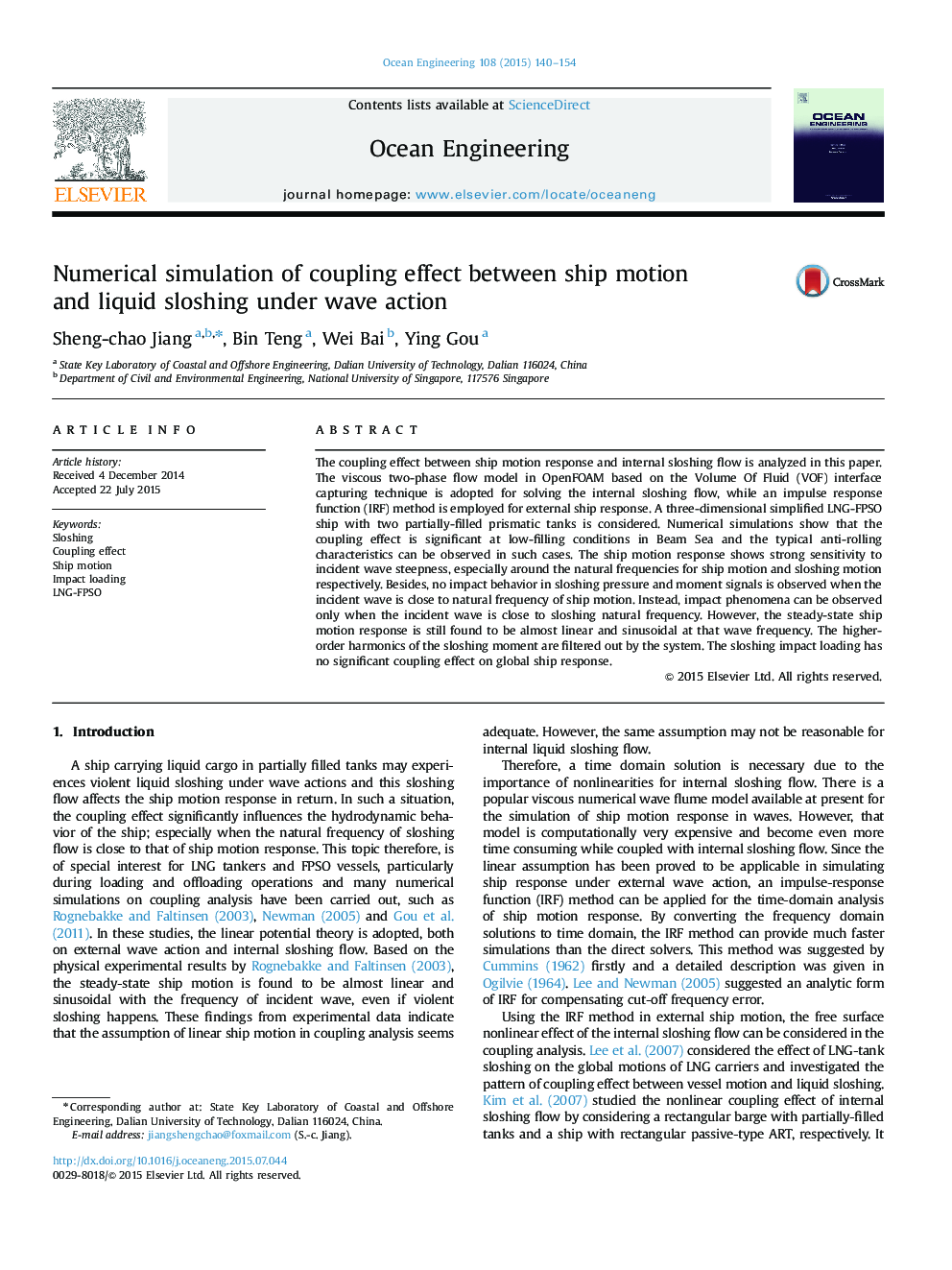| Article ID | Journal | Published Year | Pages | File Type |
|---|---|---|---|---|
| 8065407 | Ocean Engineering | 2015 | 15 Pages |
Abstract
The coupling effect between ship motion response and internal sloshing flow is analyzed in this paper. The viscous two-phase flow model in OpenFOAM based on the Volume Of Fluid (VOF) interface capturing technique is adopted for solving the internal sloshing flow, while an impulse response function (IRF) method is employed for external ship response. A three-dimensional simplified LNG-FPSO ship with two partially-filled prismatic tanks is considered. Numerical simulations show that the coupling effect is significant at low-filling conditions in Beam Sea and the typical anti-rolling characteristics can be observed in such cases. The ship motion response shows strong sensitivity to incident wave steepness, especially around the natural frequencies for ship motion and sloshing motion respectively. Besides, no impact behavior in sloshing pressure and moment signals is observed when the incident wave is close to natural frequency of ship motion. Instead, impact phenomena can be observed only when the incident wave is close to sloshing natural frequency. However, the steady-state ship motion response is still found to be almost linear and sinusoidal at that wave frequency. The higher-order harmonics of the sloshing moment are filtered out by the system. The sloshing impact loading has no significant coupling effect on global ship response.
Related Topics
Physical Sciences and Engineering
Engineering
Ocean Engineering
Authors
Sheng-chao Jiang, Bin Teng, Wei Bai, Ying Gou,
